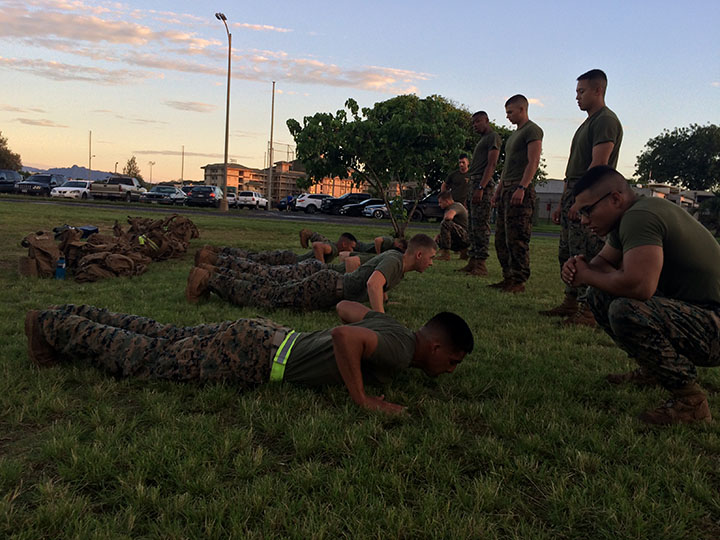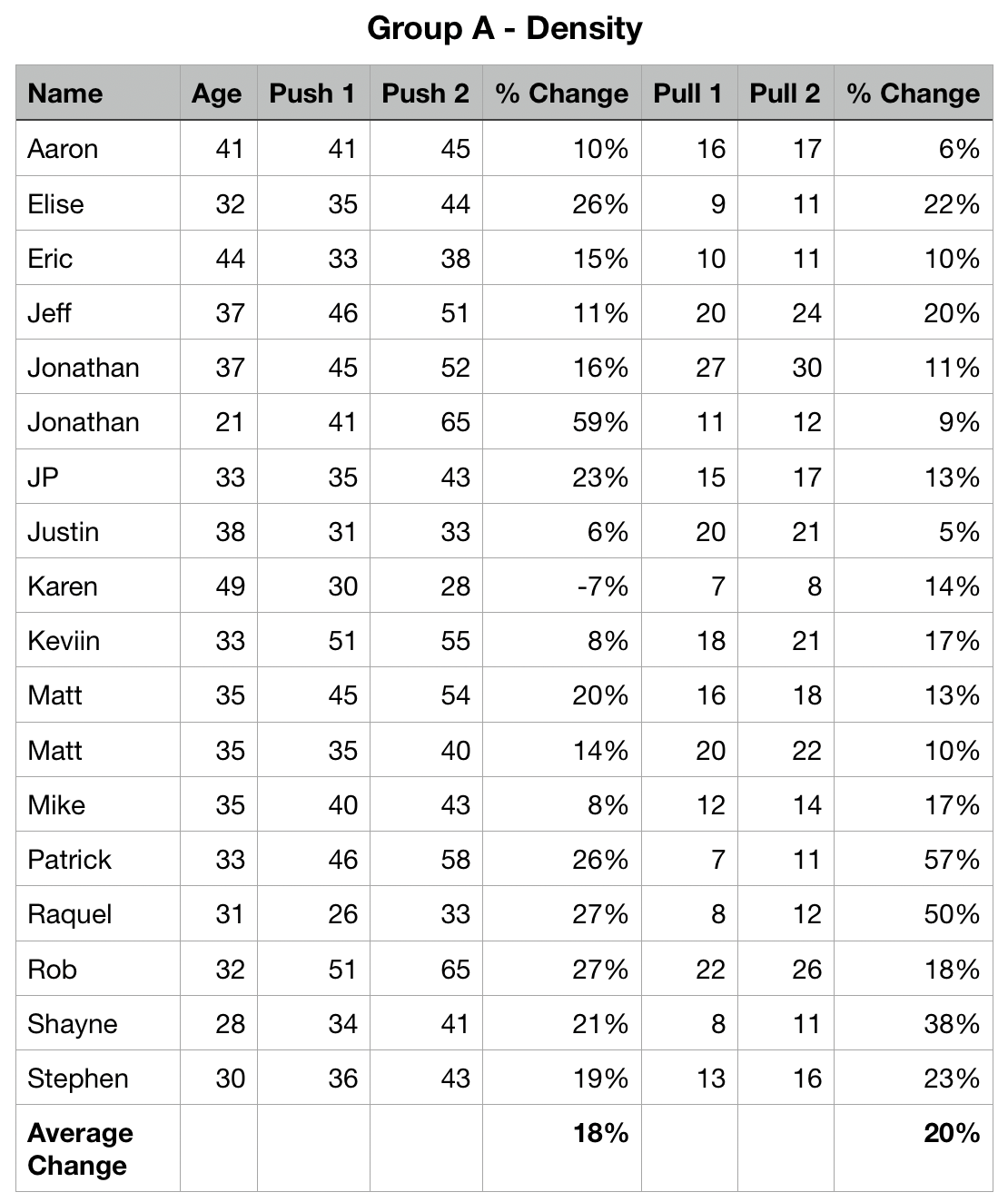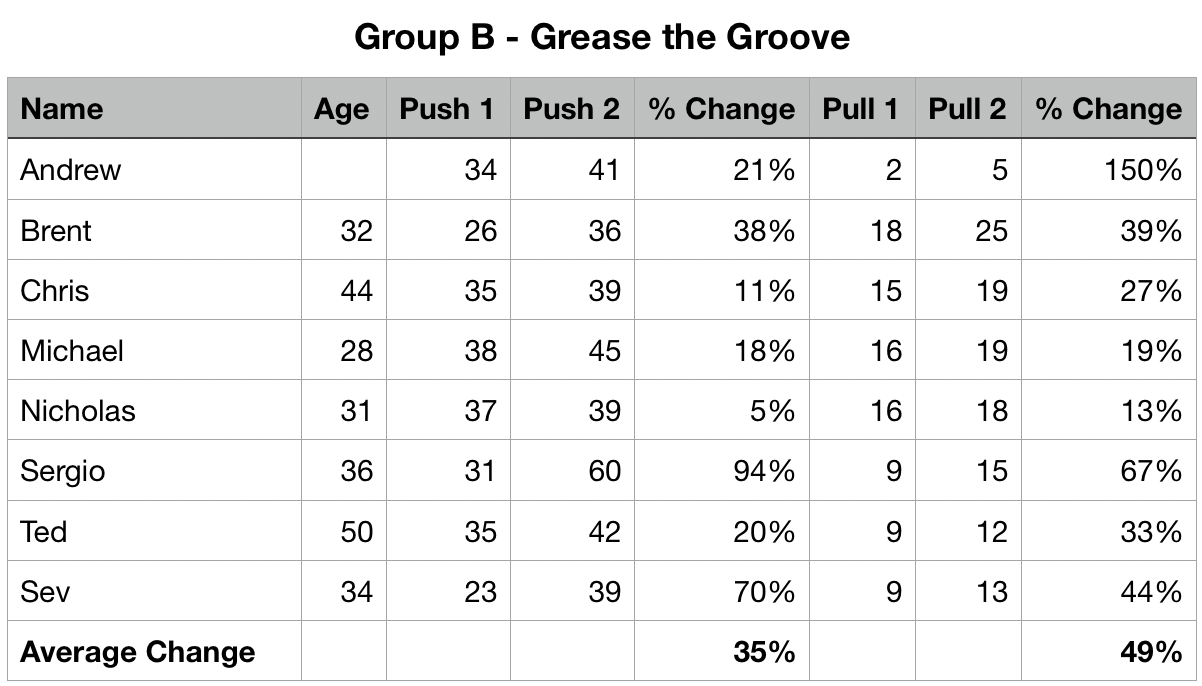By Rob Shaul
BLUF
This 3.5 week, 3-day/week Mini-Study compared the effectiveness of two progression methodologies (Density and Grease the Groove) to improve 75-second max rep Hand Release Push Ups and Pull Ups (no time limit).
The results found that the Grease the Groove progression (Group B) out-performed the Density progression (Group A) in both Hand Release Push Up and Pull Up improvement.
DETAILS
Two 3.5-week, 3 or 5 day/week cycles were designed to test the study progressions above, and MTI advertised for Lab Rats via our weekly newsletter, Beta, which has 35,000+ weekly subscribers.
Lab Rat volunteers were randomly assigned into groups: Group A (Density) and Group B (Grease the Groove).
Group A completed MTI’s Density progression for Hand Release Push Ups and Pull Ups, three days/week.
Group B will completed MTI’s take on a “Grease the Groove” progression 5 days/week. “Grease the Groove” is made popular by kettlebell guru Pavel Tsatsouline, and involves completing multiple sets of both Hand Release Push Ups and Pull Ups each day, but far below max effort. More HERE on the general theory.
The Study was completed in March 2020, and the study subjects self-reported their pre and post cycle Max Rep Hand Release Push Up and Pull Up assessment results.
The Mini-Study was designed to complement the athletes’ regular training. We asked participants to avoid other push up and pull up work during the study duration.
RESULTS & DISCUSSION
A total of 26 individuals completed the study.
Twenty-eight Lab Rats in Group A (Density) started, and 18 completed.
Twenty-five Lab Rats in Group B (Grease the Groove) started the study, and 8 completed.
Group A (Density) athletes saw an average 18% increase in their max rep Hand Release Push Up and 20% increase in their max rep Pull Up results over the course of the study.
Group B (Grease the Groove) athletes saw an average 35% increase in their max rep Hand Release Push Up and 49% increase in their max rep Pull Up results over the course of the study.
Results below:
Study design elements that could have impacted these results could include it’s a relatively short duration (3.5 weeks), and how other training may have impacted performance.
By design, this study didn’t dictate the athlete’s full training regimen during the study period as we wanted to test the ability to study a focused fitness attribute change without dictating complete programming. This was done to encourage lab rat participation and decrease attrition.
One interesting element of this study is the much greater attrition in the Group B (Grease the Groove) lab rats. This programming required a greater time commitment – as the individual athletes had to do 8 sets of Hand Release Push Ups and 8 sets of Pull Ups, 5 days/week.
I wonder if there had been less attrition, if the differences between both groups’ performance would have been narrower. As well, I wonder if the greater time demands affected the Grease the Groove group attrition, and if this should be a consideration for including this progression in program design.
Overall, I was somewhat surprised by these results as I expected there not to be a significant difference in performance between the groups.
NEXT STEPS
The out-performance of the Grease the Groove group was impressive and moving forward, I will formalize this progression and begin adding it as a progression method for bodyweight calisthenic exercise improvement.
Questions, Comments, Feedback? Email rob@mtntactical.com



